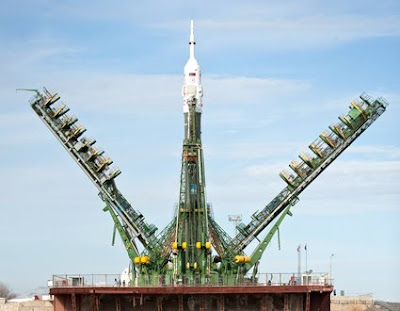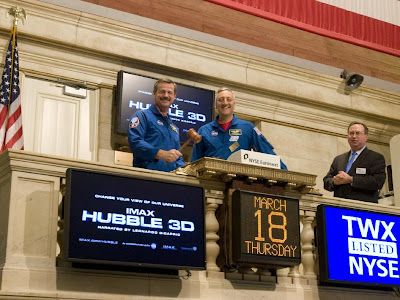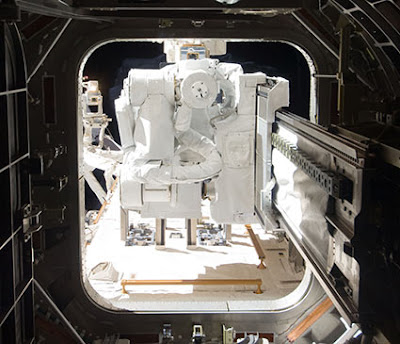MOFFETT FIELD, Calif. -- NASA today unveiled an interactive computer simulation that allows virtual explorers of all ages to dock the space shuttle at the International Space Station, experience a virtual trip to Mars or a lunar impact, and explore images of star formations taken by the Hubble Space Telescope.
In an effort to excite young people about space and NASA's missions, the agency has launched the online Space Communication and Navigation (SCaN) simulation, designed to entertain and educate. The interactive simulation offers a virtual 3-D experience to visualize how data travels along various space communications paths.
"The elaborate space communications networks that connect scientists and engineers with NASA's spacecraft is essential to all of NASA's missions and can be a challenging concept to comprehend," said Barbara Adde, a policy and strategic communications manager for the Office of Space Communications and Navigation at NASA Headquarters in Washington. "This simulation helps explain this complex infrastructure in an engaging way by using an interactive 3-D game."
The interactive Space Communication and Navigation simulation allows visitors to select spacecraft and experience a "flythrough," or a tutorial with images and descriptions of NASA's three space communication networks. For example, the Near Earth Network flythrough shows how data originates at an antenna at McMurdo Station, McMurdo Sound, Antarctica. The data is then sent to NASA's Ice, Cloud, and land Elevation Satellite, or ICESat, as it passes overhead.
The Space Network flythrough also shows how data is relayed from NASA's White Sands Test Facility, N.M., to the space station via the Tracking and Data Relay Satellite System, a network of communication satellites and ground stations NASA uses for space communications.
Finally, in the Deep Space Network demonstration, visitors learn how NASA communicates with the Mars Exploration Rovers, Sprit and Opportunity, by using the Madrid Deep Space Network antenna to send data to the Mars Reconnaissance Orbiter, which then relays the data to the rover.
"Making this interactive simulation available to young people is important and may lead them to consider a career in engineering, science or information technology as it relates to space," said Chris C. Kemp, chief information officer at NASA's Ames Research Center at Moffett Field, Calif. "NASA is embracing the fact that programs like this help convey NASA's message to people who respond well to virtual and online learning environments."
The space communication network simulation features nine spacecraft to choose from, including the Hubble Space Telescope, the space station, the space shuttle orbiter, the Spirit and Opportunity rovers, Cassini, the Lunar CRater Observation and Sensing Satellite (LCROSS), ICESat and Aura. Once a spacecraft is contacted, visitors can request actions such as "choose an imaging target" and "take pictures" of the Crab Nebula as seen from Hubble, or view videos of the space shuttle docking at the station.
In addition to the Space Communication and Navigation simulation, NASA provides interactive applications and other online educational tools on its Web site.
To explore the Space Communication and Navigation network simulation, visit:
http://www.nasa.gov/multimedia/3d_resources/spacecomm.html
For more information about the Space Communications and Navigation network, visit:
http://www.spacecomm.nasa.gov
For more information about NASA's educational resources, visit:
http://www.nasa.gov/education
 Meanwhile aboard the station, the Expedition 23 crew prepared for the arrival of its new crew members while getting ready for the coming of the STS-131 crew aboard space shuttle Discovery.
Meanwhile aboard the station, the Expedition 23 crew prepared for the arrival of its new crew members while getting ready for the coming of the STS-131 crew aboard space shuttle Discovery.






















